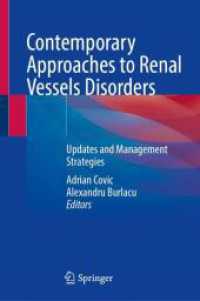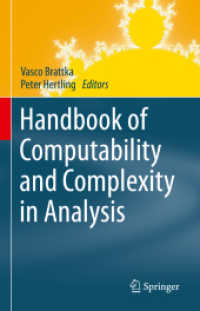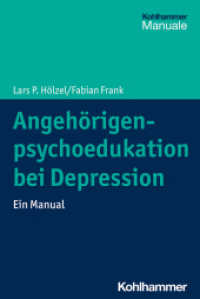- ホーム
- > 洋書
- > ドイツ書
- > Mathematics, Sciences & Technology
- > Technology
Full Description
A smart rotor is a wind turbine rotor that, through a combination of sensors, control units and actuators actively reduces the variation of the aerodynamic loads it has to withstand. Smart rotors feature promising load alleviation potential and might provide the technological breakthrough required by the next generation of large wind turbine rotors.
The book presents the aero-servo-elastic model of a smart rotor with Adaptive Trailing Edge Flaps for active load alleviation and provides an insight on the rotor aerodynamic, structural and control modeling. A novel model for the unsteady aerodynamics of an air foil section with flap is presented and coupled with a multi-body structural representation. A smart rotor configuration is proposed, where the Adaptive Trailing Edge Flaps extend along the outer 20 % of the blade span. Linear Quadratic and Model Predictive algorithms are formulated to control the flap deflection. The potential of the smart rotor is finally confirmed by simulations in a turbulent wind field. A significant reduction of the fatigue loads on the blades is reported: the flaps, which cover no more than 1.5 % of the blade surface, reduce the fatigue load by 15 %; a combination of flap and individual pitch control allows for fatigue reductions up to 30 %.
Contents
Introduction.- Simulation Environment.- Load Analysis.- ATEFlap Aerodynamic Model.- Adaptive Trailing Edge Flap placement.- Preliminary evaluation with feed-forward cyclic control.- Model Based control algorithms for a rotor with ATEF.- Summary of findings and future work.- Conclusion.








